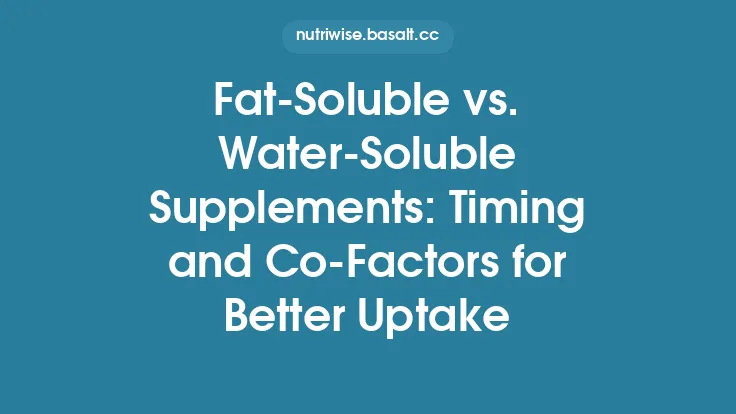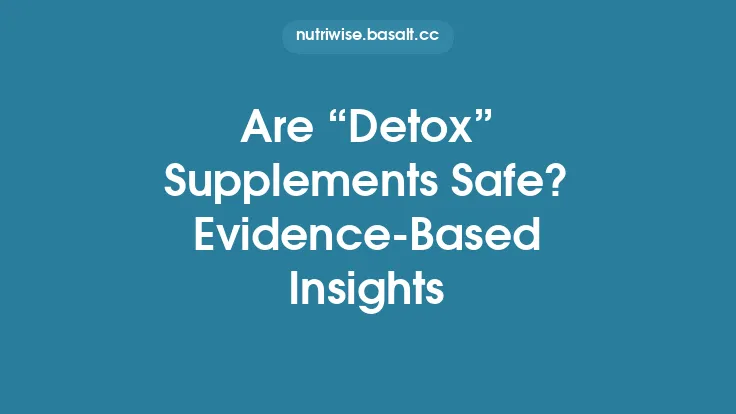The regulatory environment for dietary supplements and prescription pharmaceuticals is built on two fundamentally different philosophies. While both categories ultimately aim to protect public health, the mechanisms by which the United States government (and many other jurisdictions) ensures safety, efficacy, and truthful marketing diverge sharply. Understanding these divergences is essential for anyone who manufactures, markets, or consumes these products, as the rules that apply to one class do not automatically transfer to the other.
Legal Definitions and Classification
Dietary Supplements
Under the Dietary Supplement Health and Education Act of 1994 (DSHEA), a dietary supplement is defined as a product taken by mouth that contains a “dietary ingredient” intended to supplement the diet. Dietary ingredients may include vitamins, minerals, herbs or other botanicals, amino acids, and substances such as enzymes, organ tissues, or metabolites. The law explicitly excludes products that are represented as conventional foods or as drugs.
Pharmaceuticals
Prescription and over‑the‑counter (OTC) drugs are defined by the Federal Food, Drug, and Cosmetic Act (FD&C Act) as articles intended for use in the diagnosis, cure, mitigation, treatment, or prevention of disease, or that are intended to affect the structure or any function of the body. The key distinction is the therapeutic intent: a product marketed as a drug must claim to treat, prevent, or diagnose a medical condition.
The classification determines which statutory provisions apply, which agency divisions are responsible for oversight, and what evidentiary standards must be met before a product reaches the market.
Approval Pathways: Pre‑Market Review vs. Post‑Market Notification
Pharmaceuticals – Pre‑Market Authorization
Before a new drug can be sold, it must undergo a rigorous pre‑market review process. Manufacturers submit an Investigational New Drug (IND) application to begin clinical testing, followed by a New Drug Application (NDA) or a Biologics License Application (BLA) once trials are complete. The FDA’s Center for Drug Evaluation and Research (CDER) or Center for Biologics Evaluation and Research (CBER) evaluates the data for safety, efficacy, and manufacturing quality. Only after a positive advisory committee recommendation and FDA approval can the product be marketed.
Supplements – Post‑Market Notification (or “No Pre‑Approval”)
In contrast, dietary supplements are not subject to pre‑market approval. The manufacturer is responsible for ensuring that the product is safe and that any claims are truthful and not misleading. The FDA’s Office of Dietary Supplement Programs (ODSP) may intervene only after a product is on the market, typically in response to safety concerns, adulteration, or false claims. The “notification” aspect is limited to a requirement that manufacturers submit a New Dietary Ingredient (NDI) notification to the FDA at least 75 days before marketing a supplement containing a dietary ingredient not marketed in the United States before October 15, 1994. The NDI notification is not an approval; it is a safety assessment request.
Evidence Requirements: Clinical Trials vs. Substantial Evidence
Pharmaceuticals
The evidentiary bar for drugs is high. Sponsors must provide “substantial evidence” of effectiveness, which the FDA defines as data from adequate and well‑controlled investigations—typically Phase III randomized, double‑blind, placebo‑controlled trials. Safety data must be collected across multiple phases, with a clear risk‑benefit analysis.
Supplements
For supplements, the FDA does not require clinical efficacy data. Manufacturers may make “structure‑function” claims (e.g., “supports healthy joints”) provided they include a disclaimer that the claim has not been evaluated by the FDA and that the product is not intended to diagnose, treat, cure, or prevent any disease. If a supplement makes a disease claim, it is automatically re‑classified as a drug and must undergo the pharmaceutical approval process. Evidence supporting structure‑function claims may consist of historical use, in‑vitro studies, or limited human data, but the regulatory framework does not mandate the same level of rigor as for drugs.
Labeling and Claim Restrictions
Pharmaceutical Labels
Drug labeling is highly prescriptive. The FDA requires a “Drug Facts” panel that includes indications, dosage, contraindications, warnings, adverse reactions, and a complete list of active and inactive ingredients. All claims must be supported by the data submitted in the NDA/BLA, and any off‑label use is not permitted in promotional materials.
Supplement Labels
Supplement labeling follows the “Supplement Facts” format, which lists the dietary ingredients, their amounts, and the serving size. Manufacturers may make three types of claims:
- Health Claims – Statements linking a nutrient to a reduced risk of disease, which must be authorized by the FDA based on a specific scientific standard.
- Structure‑Function Claims – Descriptions of how a product may affect the normal structure or function of the body, requiring only the disclaimer mentioned earlier.
- Nutrient Content Claims – Statements about the level of a nutrient (e.g., “high in vitamin C”).
Unlike drug labeling, supplement labels are not pre‑approved. The FDA monitors for false or misleading statements post‑market and can issue warning letters or take enforcement action if violations are identified.
Manufacturing Oversight and Quality Standards
Pharmaceutical Manufacturing
Drug production is governed by Current Good Manufacturing Practice (cGMP) regulations that are prescriptive and subject to routine FDA inspections. cGMP for drugs includes detailed requirements for facility design, equipment qualification, process validation, batch record documentation, and stringent testing of each lot for identity, purity, potency, and sterility (when applicable). Any deviation from cGMP can result in a Form 483 observation, warning letter, or product seizure.
Supplement Manufacturing
While dietary supplements are also required to follow cGMP, the regulations are less prescriptive in certain areas. The supplement cGMP focuses on ensuring that the product is produced under sanitary conditions, that the identity of each ingredient is verified, and that the final product conforms to label specifications. However, the depth of process validation, in‑process testing, and batch release criteria is generally less exhaustive than for pharmaceuticals. The FDA conducts periodic inspections, but the frequency and scope differ, reflecting the distinct risk profiles assigned to each product class.
Adverse Event Reporting and Post‑Market Surveillance
Pharmaceuticals
Manufacturers of approved drugs must maintain a robust pharmacovigilance system. The FDA’s MedWatch program collects adverse event reports, and manufacturers are required to submit periodic safety update reports (PSURs) and, for certain products, risk evaluation and mitigation strategies (REMS). The FDA can mandate post‑marketing studies (Phase IV) to further assess safety or efficacy.
Supplements
Supplement manufacturers are required to report serious adverse events to the FDA within 15 days of becoming aware of them, using the same MedWatch system. However, the reporting burden is lighter: only serious events (e.g., hospitalization, death) must be reported, and there is no requirement for routine safety updates or post‑marketing studies. The FDA relies heavily on voluntary reporting from consumers, health professionals, and manufacturers, which can lead to under‑representation of less severe but clinically relevant events.
Regulatory Enforcement and Penalties
Pharmaceutical Violations
Because drugs are subject to pre‑market approval, violations such as marketing a drug without an NDA, misbranding, or manufacturing out of compliance can result in severe penalties, including civil fines up to $10,000 per violation per day, criminal prosecution, product seizure, and injunctions. The FDA can also issue a “black box” warning or require a product recall.
Supplement Violations
For supplements, enforcement actions typically begin with a warning letter, followed by a notice of violation if the issue persists. Penalties can include civil monetary penalties (up to $10,000 per day for each violation), product seizure, injunctions, and, in extreme cases, criminal prosecution for fraud or adulteration. Because the baseline regulatory burden is lower, the FDA’s enforcement strategy often emphasizes corrective action rather than punitive measures, unless there is evidence of intentional deception or significant public health risk.
International Regulatory Landscape
Regulatory approaches to supplements and pharmaceuticals vary worldwide, but the dichotomy between pre‑market approval for drugs and post‑market oversight for supplements is a common theme.
- European Union – The EU classifies “food supplements” under the Food Supplements Directive, requiring notification to member states but not a full safety assessment. Pharmaceuticals must obtain a Marketing Authorization (MA) after a centralized or national review, similar to the U.S. NDA process.
- Canada – Natural Health Products (NHPs) occupy a middle ground; they require a product license that includes safety and efficacy data, though the evidentiary standard is lower than for prescription drugs. Pharmaceuticals undergo a New Drug Submission (NDS) with Health Canada.
- Australia – Complementary medicines are regulated as “listed” or “registered” products. Listed products have minimal pre‑market requirements, while registered products must demonstrate safety, quality, and efficacy. Prescription medicines require a Therapeutic Goods Administration (TGA) registration, analogous to the FDA’s NDA.
These variations illustrate that the supplement‑pharmaceutical regulatory split is not unique to the United States, but the specific thresholds for evidence, labeling, and manufacturing differ across jurisdictions.
Implications for Consumers and Industry
For Consumers
The regulatory distinction means that a supplement’s safety and efficacy are not guaranteed by a pre‑market review. Consumers should be aware that the burden of proof lies with the manufacturer, and that the FDA’s role is largely reactive. Understanding the type of claim (structure‑function vs. health claim) can help gauge the level of scientific support behind a product.
For Industry
Manufacturers of supplements benefit from a faster time‑to‑market and lower development costs, but they also assume greater responsibility for post‑market compliance. Pharmaceutical companies face higher upfront costs due to clinical trials and extensive regulatory submissions, but they gain the advantage of FDA endorsement, which can be a powerful marketing tool. Companies that operate in both spaces must maintain separate compliance programs to satisfy the divergent requirements.
Future Trends and Ongoing Debates
- Calls for Greater Pre‑Market Scrutiny – Consumer advocacy groups and some policymakers argue that certain high‑risk supplements (e.g., those containing novel botanical extracts) should undergo a more rigorous pre‑market safety assessment, potentially through an expanded NDI review process.
- Digital Health Integration – As manufacturers incorporate digital platforms (apps, wearables) to personalize supplement regimens, regulators are exploring how to oversee health‑related claims made through software, blurring the line between a supplement and a medical device.
- Harmonization Efforts – International bodies such as the International Council for Harmonisation (ICH) are discussing ways to align supplement regulations with drug standards, especially for products that straddle the boundary (e.g., nutraceuticals with pharmacological activity).
- Real‑World Evidence (RWE) – The FDA is increasingly interested in leveraging real‑world data to monitor supplement safety post‑market. While not a substitute for pre‑approval, RWE could inform future policy adjustments.
- Legislative Proposals – Periodic bills have been introduced in Congress to amend DSHEA, aiming to tighten labeling, increase reporting requirements, or create a dedicated supplement safety office within the FDA. The outcome of these proposals will shape the regulatory landscape for years to come.
Understanding the regulatory differences between dietary supplements and pharmaceuticals provides a clear picture of why the two product classes behave so differently on the market. The pharmaceutical pathway is built on a foundation of pre‑market scientific validation, extensive manufacturing controls, and ongoing pharmacovigilance. The supplement pathway, by design, emphasizes consumer access and market flexibility, relying on post‑market oversight to protect public health. Recognizing these structural distinctions equips consumers, manufacturers, and health professionals to navigate the marketplace more intelligently and to advocate for policies that balance safety with innovation.





